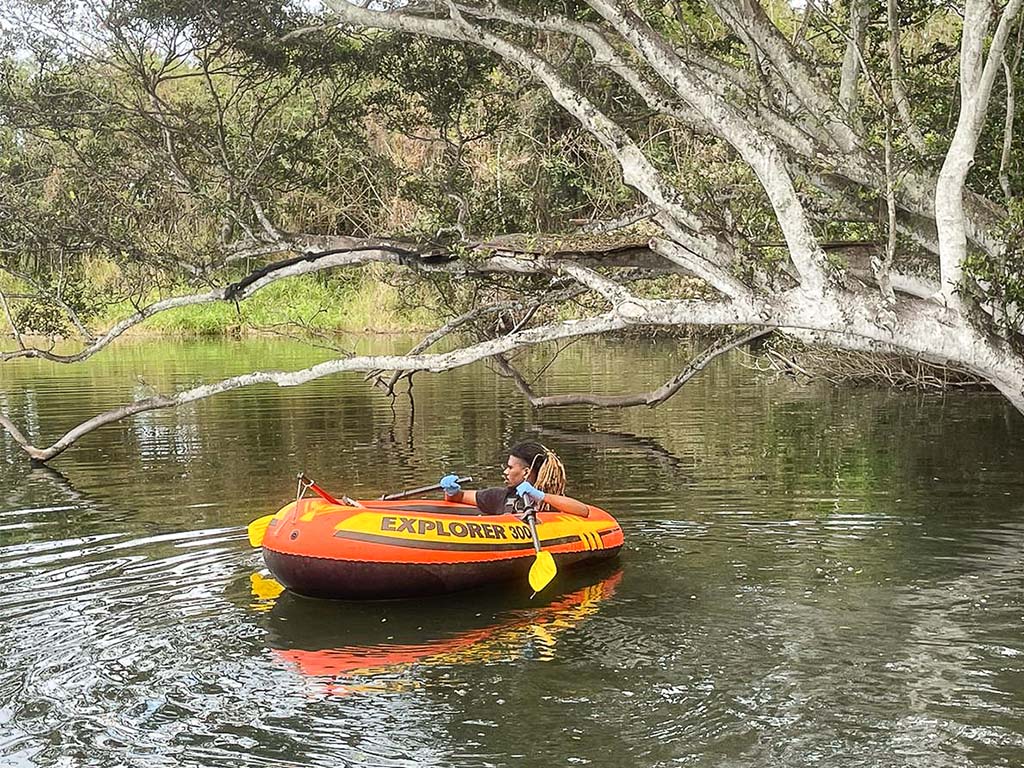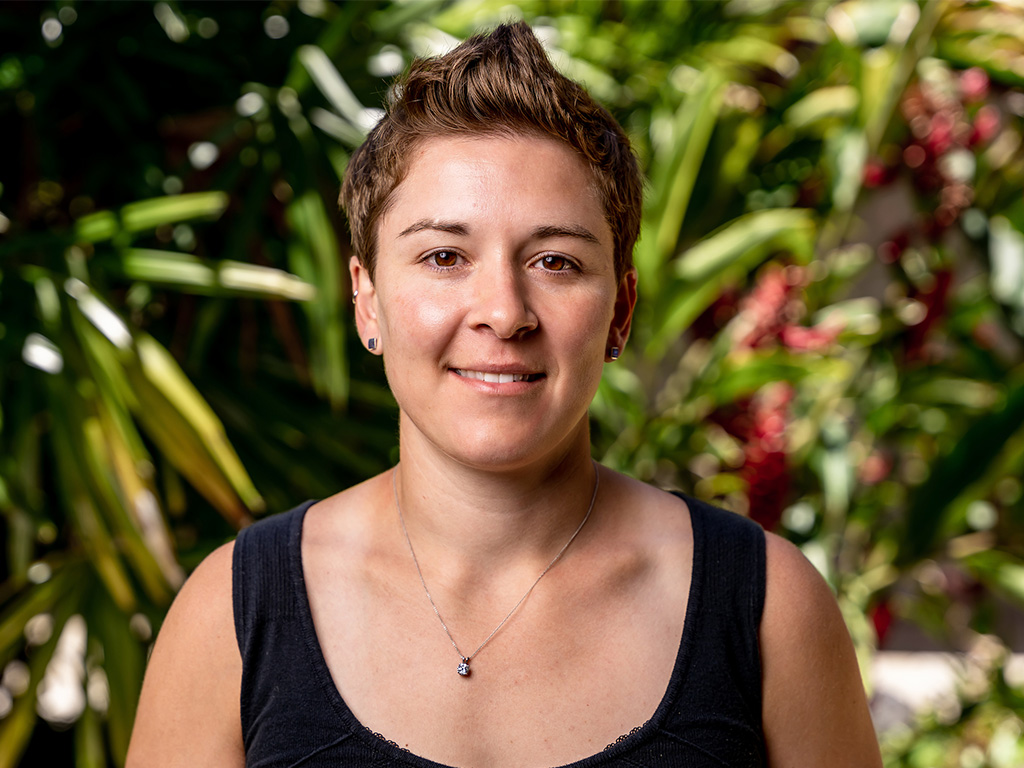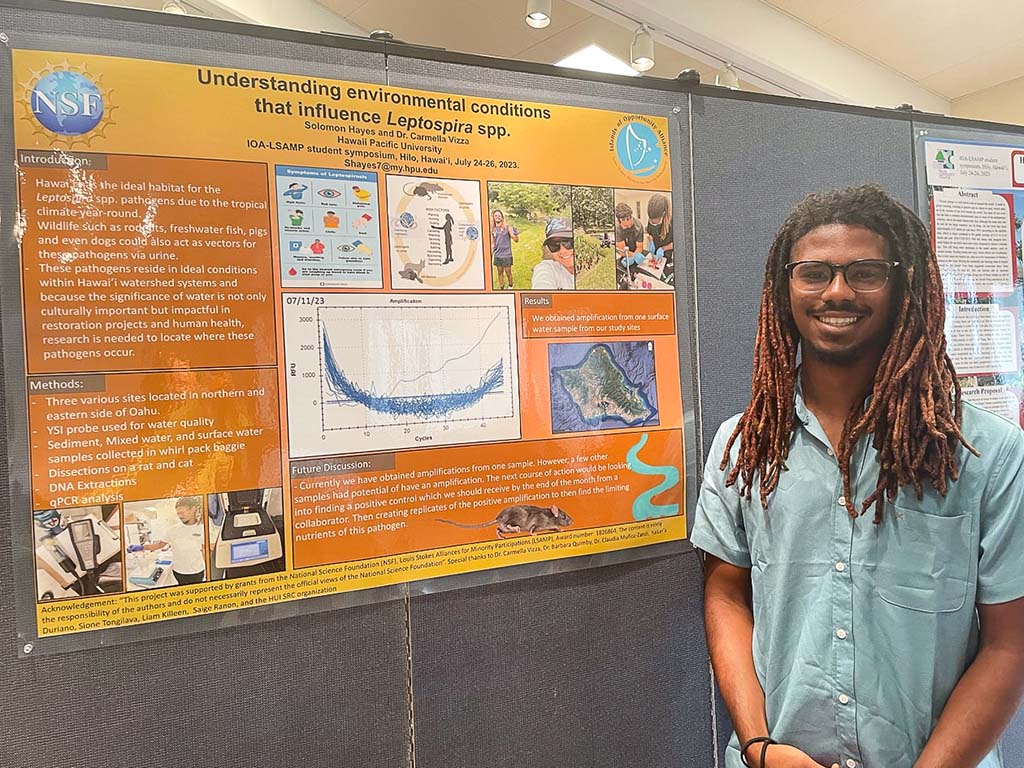
HPU alumnus Solomon Hayes is on the HPU team conducting research on leptospirosis.
HPU has received a $50,000 grant from INBRE to research the survival and growth of leptospirosis in Hawai‘i wetlands taro patches (lo‘i) and fishponds (loko i‘a). The disease affects vulnerable populations, impacts over one million people per year, and kills 60,000 annually. Leptospirosis remains to be a significant disease in Hawai‘i with at least 30 cases reported annually. But due to a wide range of symptoms, the confirmed cases of leptospirosis is believed to be severely underdiagnosed in Hawai‘i.
Native Hawaiians who are engaged in indigenous practices are at higher risks of contracting leptospirosis due to their time spent in these freshwater ecosystems. For those who are engaged in lo‘i and loko i‘a practices it is important to provide knowledge of the local ecology of leptospirosis, public health programs available, and clinical practices for early diagnosis.

Carmella Vizza.
“The goal of this grant is to build a foundation so we can grow a transdisciplinary research program in Hawai‘i,” said HPU Assistant Professor Carmella Vizza, Ph.D., principal investigator of the grant. “Many of the native Hawaiian community organizations are trying to restore lo‘i and loko i‘a with the idea of achieving food sovereignty. With this research grant, we are aiming to see where we find the bacteria that causes leptospirosis (Leptospira) in different Hawaiian wetland environments, specifically sites undergoing biocultural restoration.”
The project aims to begin building a comprehensive leptospirosis research program in Hawai‘i, encompassing disease ecology, epidemiology, and public health outreach for Native Hawaiians and biocultural restoration participants in wetlands. To bridge knowledge gaps on Leptospira survival and exposure risk, research at HPU will combine an environmental survey of Leptospira in Hawaiian wetlands with experimental microcosms to study the pathogen’s grown and survival. The HPU team will also conduct an environmental risk assessment, including surveys for volunteers of two community organizations, Kauluakalana and the North Shore Community Land Trust, who lead biocultural restoration projects.
Leptospirosis transmission rates are increasing across the globe, most likely due to rising global temperatures and changing rainfall patterns. Urbanization is also a reason why transmission rates are rising. The disease has been found in rats, mongoose, cats, and pigs, which can then be passed on to humans in an increasingly urbanized setting.
“When we have people concentrated in smaller spaces where rats propagate, this is another hot spot for leptospirosis,” said Vizza. “I also see leptospirosis as a social justice issue because people who are more likely to get the disease work in agricultural settings or occupy marginalized spaces. Vaccine development has progressed more for livestock and pets than it is has for humans. So, we need to raise awareness and learn more about this pathogen so people who work in these environments know more about preventive practices to reduce risk and symptoms for the sake of proper and earlier diagnosis.”

Solomon Hayes presenting research.
Vizza’s team includes Solomon Hayes (HPU alumnus and former oceanography major), Liam Killeen (HPU undergraduate student), Sione Tongilava (Environmental Biology for Pacific Islanders Summer Program), Claudia Muñoz-Zanzi (epidemiologist at University of Minnesota) and community leaders Kaleo Wong (Kauluakalana) and N. Kawela Farrant (North Shore Community Land Trust).
Research for the pilot project will take place for one year with the following objectives: 1) to begin to characterize risk of leptospirosis in Hawaiian wetlands, 2) to better understand its disease ecology, 3) to explore how leptospirosis is viewed by Native Hawaiians and those engaging in biocultural restoration.
To learn more about the Department of Natural Science at HPU, click here.


